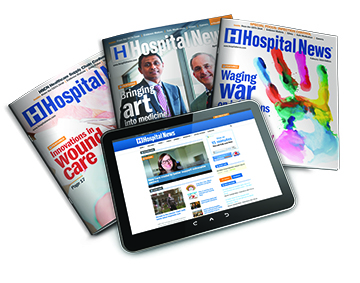If necessity is the mother of invention, patient care organizations are fertile grounds for the development of innovative technologies. Since 2012, over 6,000 news stories from the top five per cent of the most frequently read print media sources in Canada featured ground-breaking research and innovation from health care organizations. Some of these stories focus on smartphone applications and emerging technologies.
Thanks to a Community Outreach Award from the Institute of Aging at the Canadian Institutes of Health Research, these print media stories are captured in a database called Innovation Sensation. Parliamentarians had the opportunity to search this database when it was launched at a Health Research Caucus event on Medical Device Technologies, which was co-hosted by Research Canada, Senator Kelvin K. Ogilvie, MP Ms. Carol Hughes (NDP Algoma—Manitoulin—Kapuskasing), and MP Dr. Kirsty Duncan (Lib. Etobicoke North), on Parliament Hill.
MORE: THE DIGITAL HEALTH REVOLUTION
“HealthCareCAN, as the national voice of health care organizations across Canada, is committed to expanding overall research capacity and supporting the spread of research and innovation in support of service excellence”, says Bill Tholl, President & CEO of HealthCareCAN.
Of notable mention from the database are a number of smartphone apps which aim to help healthcare professionals more effectively diagnose and treat patients. For example, Alberta Health Services recently developed an app which helps clinicians better manage heart failure. At Provincial Health Services Authority in British Columbia, an app is helping to predict if lung lesions seen on a CT scan are cancerous or benign. Researchers at the IWK Health Centre in Nova Scotia have designed an app which allows chronic headache sufferers to track their symptoms and access pain management solutions.
Also showcased are apps designed to help parents respond to the unique health needs of their children. The Hospital for Sick Children has designed an app to help children with cancer report their pain and smartphone app from the University Health Network helps parents determine the appropriate dose of fever medication for young children.
Other stories feature existing technologies used in novel ways. Research taking place at Baycrest links playing video games to improved visual attention, and a recent study at the Institut universitaire de gériatrie de Montréal used a video game console to encourage physiotherapy program participants to dance resulting in improve urinary continence. At Kingston General Hospital and Queen’s University, robots and video games are used to teach new procedures.
MORE: BALANCING CONFLICTS OF OBLIGATION BY DESIGN
Medical devices and technologies are a vital component of effective healthcare delivery in Canada. With a rapidly aging population and rates of chronic disease on the rise, the demand for new and innovative medical technologies is intensifying.
“Innovation Sensation illustrates the crucial role Canada’s healthcare organizations play in the advancement of health research and the promotion of technological innovation, yielding novel devices and technologies that help to solve the health challenges of the future,” says Tina Saryeddine, Executive Director of Research and Innovation at HealthCareCAN.
The next phase of this project, ‘Like an e-Dragons’ Den’, seeks to engage healthcare CEOs and their organizations’ Patient Advisory Boards on the application, significance, and implementation potential of selected Canadian healthcare innovations. In so doing, HealthCareCAN hopes to facilitate the spread of research and innovation and promote new and ground-breaking technological innovations.




